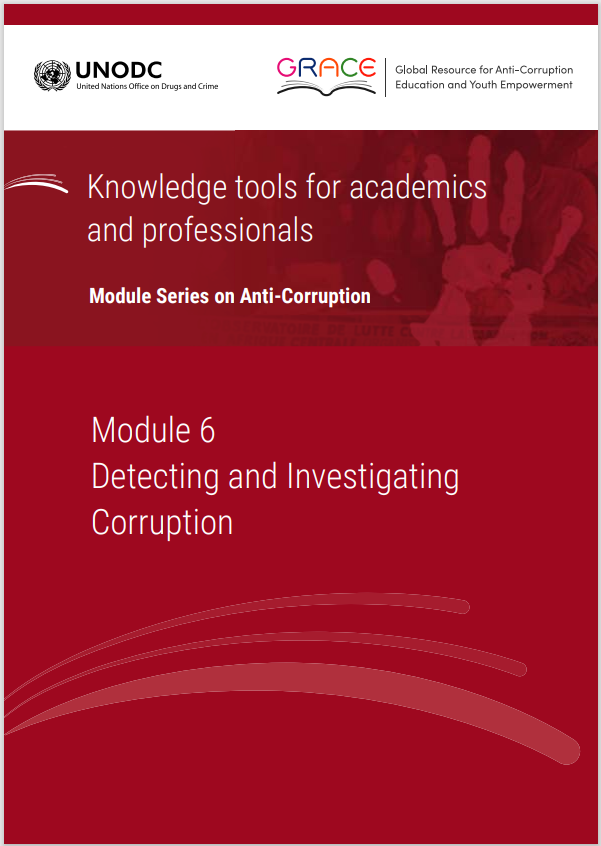This module is a resource for lecturers
Introduction
How do we know when corruption takes place? What kind of environment will make it difficult to conceal corrupt behaviour? Once corruption is detected, how can States and organizations investigate it? These and related questions are addressed in this Module. The detection and investigation of corruption pose particular challenges as corruption is often well-hidden and may require an insider to expose it. Frequently, the direct parties to corruption all benefit in some way and are motivated to conceal it. Module 4 and Module 5 of the E4J University Module Series on Anti-Corruption address the prevention and fight against corruption in the public and private sectors, respectively. Expanding on those discussions, the present Module focuses on the most effective methods of detecting corruption: auditing and reporting. In this context, the Module stresses the importance of whistle-blowing systems and protection measures relating to the detection of corruption. This ties in with current discussions on the connection between whistle-blowing and anti-corruption enforcement in criminal and administrative proceedings - an area that is receiving increased attention from scholars and practitioners. The Module also considers the use of emerging technologies in detecting corruption, including blockchain, smartphone and Internet-based technologies. It furthermore discusses the investigation that follows the detection of corruption, including the different phases and actors that are involved. The Module provides an overview of several core areas within the rapidly growing body of literature focusing on corruption detection and investigation.
Learning outcomes
- Describe multiple mechanisms for detecting corruption, and identify their strengths and weaknesses
- Critically discuss the use of modern technology in detecting corruption, including blockchain technology, smartphone applications and open data web platforms
- Discuss the importance of whistle-blowers for the detection of corruption and consider ways to protect them
- Analyse the nature and value of self-reporting requirements, and internal and external audit systems for detecting and deterring corruption, and promoting non-corrupt behaviour and environments
- Understand how investigations of corruption are conducted, and describe the difference between internal and external investigations
 Next:
Key issues
Next:
Key issues
 Back to top
Back to top
